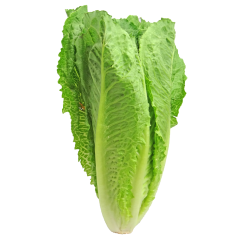Roomansalaatti - Romaine lettuce






Roomansalaatti – Romaine lettuce
Lactuca sativa var. longifolia
asteraceae -heimo Asterikasvit
―
Roomansalaatti on korkeakeräinen sidesalaatti, joka muistuttaa kiinankaalia. Roomansalaatin lehdet ovat melko suuria, pitkiä sekä karkeita. Väriltään se on tyvestä vaaleamman ja lehtien päistä tummemman vihreä. Taimet istutetaan noin kolmenkymmenen senttimetrin välein. Sen kasvuaika on kaksi kuukautta.
Roomansalaattia on kauan tunnettu salaatti ja sitä viljeltiin jo muinaisessa Egyptissä. Nimi juontaa luultavasti juurensa Roomaan, jonka kautta se kulkeutui Läntiseen Eurooppaan. Erityisesti roomansalaatti sisältää A-vitamiinia sekä folaattia, joka on tärkeä vesiliukoinen vitamiini.
Roomansalaatin maku on tavallista keräsalaattia voimakkaampi. Erityisesti se tunnetaan Caesar-salaatin raaka-aineena. Se tuo myös perinteisiin tuoresalaatteihin makua ja väriä. Roomansalaatin lehdet sopivat erinomaisesti esimerkiksi lämpimiin ruokiin, kuten wokkeihin. Makoisa idea on myös käyttää lehtiä pieninä lautasina tai veneinä ja asettaa lehdille pieniä suupaloja.
―
Romaine lettuce
Lactuca sativa var. longifolia
Romaine salads are upright growing and have elongated slender leaves with strong dominant mid ribs. The outer leaves are darker green, and all leaves have an excellent firm texture and sweet flavour. The tallest types reaching up to 35cm are generally known as cos lettuce, the medium more open types reaching around 20-25cm known as romaines, and the most compact and smallest reaching about 12cm known as little gem types. The little gem has also been known as the sugar cos, being as sweet as the best butterhead salads.
Romaine salads are ready to use 50-80 days from planting, becoming progressively firmer at their centers as the long leaves wrap around themselves forming a ´heart`. When fully ready they will have produced large numbers of usable leaves varying in colour from a dark green of the outer leaves to pale green at the center of the heart. Romianes are best when grown outdoors where they benefit from the sun to give that full flavour and robust texture. The salads grown in greenhouses and polytunnels are flimsy and tasteless by comparison.
All salads are best harvested early in the morning up until the afternoons begin to be cool around the beginning of September. Salads harvested in warm dry conditions must be rinsed directly with cold water (even after this will not be as good as those harvested early) and used as soon as possible. Quality problems are usually associated to freshness. When cut from its large tap root the transpiration that continues from a salads large leaf surface area, very quickly leads to deterioration and loss of quality.
Salads must be harvested when they are in good condition, rinsed directly when possible in cold water and kept under 5c at high relative humidity. This way they may keep well for several days.
Green City Farm 202112.6.2020